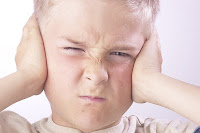Extending the range of the baritone saxophone has been quite the adventure for many saxophone players. Like many I did not start on baritone, instead I began on alto then migrated to the baritone in college. Throughout the pre-bari time I spent countless hours working over the Top-Tones book by Siguard Rascher. I had extended my range to a confident 3 octaves on most scales and arpeggios. That was short lived when I moved to playing the baritone.
Why was it so difficult? The main difficulty was that it felt as though no harmonic was lining up the way they did on alto, fingered a Bb and out popped an A. My private teacher didn’t have a great explanation initially for this other than to pull the note down with my embouchure. It was a short time later that he explained that “Low-A” bari’s will play altissimo notes a half step lower due to the extended length of the horn when compared to a “low-Bb” horn. This made sense for me as my Buescher 400 bari felt more alto like in the altissimo range than my YBS-61. This put me on the quest to find charts which applied to the “Low-A” bari and facilitated smooth transitions between notes. After all if it is cumbersome or awkwards to finger then there is an increased risk that you’ll miss the note at the exact moment you need it.
 |
| Ronnie Cuber altissimo chart from The Saxophone Journal |
One of my favorite players, Ronnie Cuber, shared his fingerings for a few notes in a back issue of the Saxophone journal. Of course these fingerings are the ones he made up so that he could get around his horn. Which is a Mark VI for those who don’t know.
Cuber is not the only baritone player to extend his range successfully. The late Nick Brignola had a masterful tone in the upper registers. For a more modern player listen to the baritone player Jeff Suzda. His use of altissimo is both in good taste and beautiful on the ears. In recent weeks I’ve been in contact with him about his use of altissimo and he has forwarded me his fingering chart which is very fluid and comparable Cuber’s but more extensive. Suzda’s finger chart: Jeff Suzda’s Altissimo Chart for Baritone.
Of course the most important question to ask yourself before you head down the altissimo path is: why do it at all? The baritone is the lowest of the saxophone voices common in today’s music and is almost never called on to play in a range comparable to an alto. So why invest effort to learning to play into a register that is both difficult and, even when played well, still sounds somewhat odd. Imagine Avi Albrecht singing Alvin and the Chipmunk styled falsetto. For those not familiar with his powerful baritone voice consider Josh Turner or Randy Travis taking their voices in to the stratosphere.
For me the reason for the extended range is a personal challenge to be enjoyed by my wife and cats. I don’t play in to the range at a show unless written. For me, just knowing that I have that in my tool box is enough. Although there is a sadistic pleasure in playing the solo trumpet part of MacArthur park in altissimo while the solo trumpet is trying to figure out who’s messing with him. They never suspect the baritone player. By the way, I only did it twice for effect during rehearsals. Thankfully the other sax players never gave me away.

